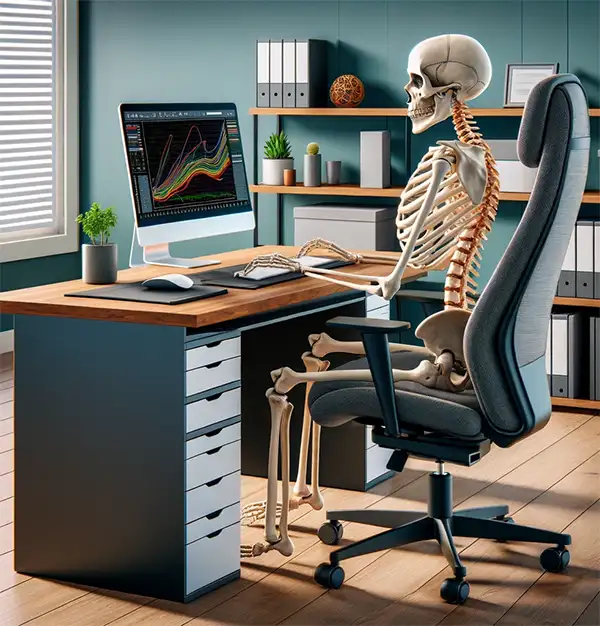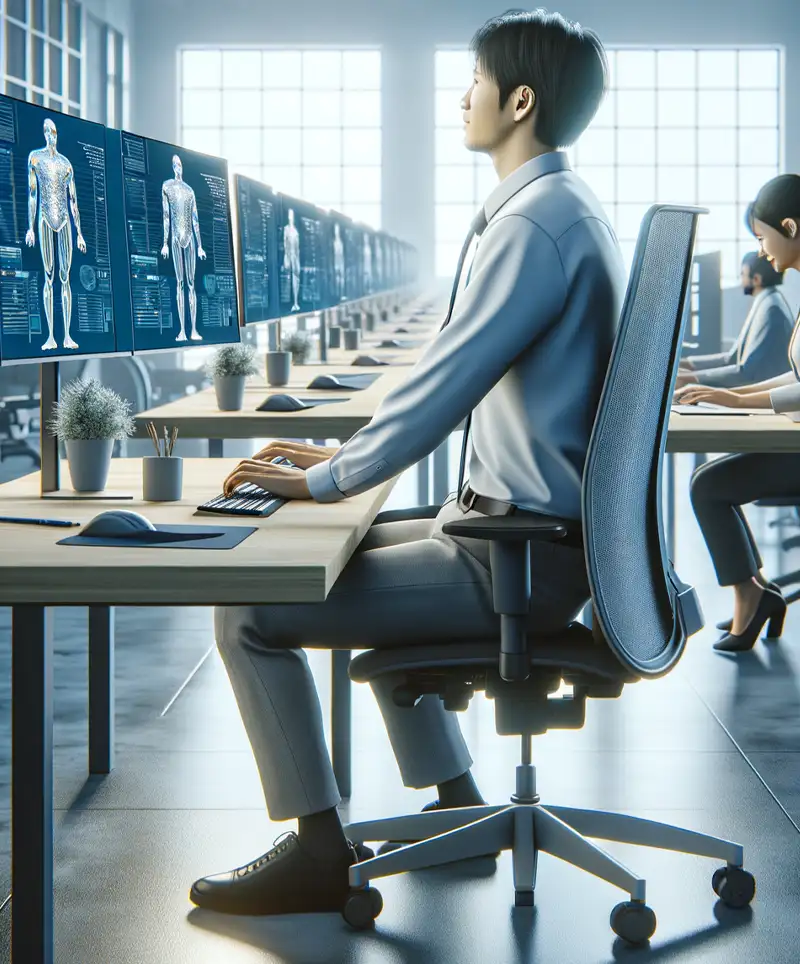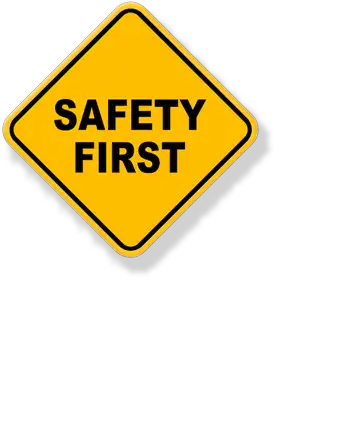When Caution is Your Co-Worker
World Day for Safety and Health at Work, celebrated annually on April 28th, isn't just another obscure holiday that pops up on your eco-friendly, company-issued calendar—it's a crucial reminder of the importance of safety goggles, hard hats, and the ever-elusive 'common sense' in the workplace. Initiated by the International Labour Organization (ILO) in 2003, this day serves to promote safe, healthy, and decent work conditions worldwide, proving that safety isn't just a slogan, it’s a way of life—or at least it should be if you want to avoid paperwork and pain.
The Serious Side of Safety
It's no laughing matter: statistics from the ILO reveal that over 2.3 million people die each year from work-related accidents or diseases. That's more than the population of some small countries! These numbers highlight why World Day for Safety and Health at Work isn’t just about wearing funny-looking goggles but about creating environments where workers can earn their paychecks without risking their lives. It’s about turning workplaces into safe spaces where the most dangerous thing is the stale doughnut left in the break room.
Let’s face it: "health and safety" are often met with yawns or eye rolls. Many view safety meetings as a perfect cure for insomnia. However, humor can be a handy tool to hammer home the importance of safety protocols. After all, it's easier to digest a message wrapped in a joke rather than in bandages after an accident. So, why not lighten the mood on World Day for Safety and Health at Work? You could celebrate with a "Most Creative Use of Safety Gear" contest or a safety-themed meme competition—because nothing says "I'm serious about safety" like a good meme.
Ergonomics - The Fancy Word for Comfort
Ergonomics may sound like the name of a high-end Greek restaurant, but it’s actually all about designing your workspace so that you can work more comfortably and safely. It's an essential part of workplace safety that goes beyond just having a good chair; it encompasses the entire setup of your workstation, from the height of your desk to the position of your computer screen.
 Imagine an office where every piece of furniture and equipment is tailored not just to fit your job, but to fit you. This personalized approach helps prevent various work-related musculoskeletal disorders, which, unlike collectible stamps, are not something you want to accumulate over time. Incorporating ergonomics into the workplace can lead to fewer injuries, less muscle fatigue, and even lower levels of work-related stress. After all, it's hard to feel zen if you're straining to see your monitor or if your chair is more of a medieval torture device than a seat.
Imagine an office where every piece of furniture and equipment is tailored not just to fit your job, but to fit you. This personalized approach helps prevent various work-related musculoskeletal disorders, which, unlike collectible stamps, are not something you want to accumulate over time. Incorporating ergonomics into the workplace can lead to fewer injuries, less muscle fatigue, and even lower levels of work-related stress. After all, it's hard to feel zen if you're straining to see your monitor or if your chair is more of a medieval torture device than a seat.
But ergonomics isn’t just about avoiding pain. It's also about enhancing productivity. A well-designed workspace can increase efficiency and improve job satisfaction. Workers are less likely to be distracted by discomfort, so they can focus better on their tasks. Plus, feeling good physically can translate into a more positive attitude at work—turning everyday tasks into something you might look forward to rather than something you endure.
So, consider giving your workspace an ergonomic makeover on World Day for Safety and Health at Work. Adjust your chair, reposition your monitor, or invest in a standing desk—because when it comes to work, comfort shouldn’t be a luxury; it should be a standard. Celebrate the day by making your office not just a place you work but a place where work feels good. After all, comfort at work is one investment that always pays off, ensuring that every day at the office can be a good (and pain-free) day.
A Global Approach to a Safer World
World Day for Safety and Health at Work isn't just a day to double-check that the fire extinguisher isn’t a glorified paperweight. It’s an international effort to ensure that from skyscraper constructors in New York to textile weavers in Bangladesh, every worker returns home with all their fingers and toes—and maybe a new appreciation for the non-slip flooring. This global observance is a call to action to reduce workplace hazards and give everyone a fighting chance against the photocopier—it's jammed again.
While World Day for Safety and Health at Work might not be the most glamorous of celebrations, it's one of the most important. So, wear your safety pin with pride (and by safety pin, we mean that giant badge that says 'I survived another meeting that should have been an email'), and remember: safety first, because trips and falls are not the kind of records you want to be setting at work.
How to Celebrate Workplace Safety Day
If you're wondering how to mark this important day, fear not—there are plenty of engaging and even entertaining ways to raise awareness and promote safety in the workplace.
- Host a Safety Drill: Whether it’s a fire drill, earthquake preparedness, or first-aid training, practice makes perfect, and safety becomes second nature.
- Recognize Safety Champions: Give a shout-out to employees who exemplify workplace safety with awards, prizes, or even just a heartfelt ‘thank you.’
- Encourage a Dress-Your-Best (Safety Edition) Contest: Have employees show off their most elaborate safety gear in a fun, lighthearted competition.
- Educational Sessions with a Twist: Instead of the usual dull safety presentation, bring in guest speakers, show engaging videos, or even gamify safety protocols to keep everyone interested.
Taking safety seriously doesn’t mean it has to be boring. A fun and engaging approach makes it more likely that safety lessons will stick, reducing workplace risks in the long run.
Fun Facts About Workplace Safety and Health
Workplace safety isn’t just about avoiding accidents—it has some truly fascinating elements! Here are some fun and eye-opening facts to keep in mind:
- The Hard Hat's Origins: The first construction hard hats were made of steamed canvas and black paint. Luckily, we’ve come a long way since then!
- Standing Desks Date Back Centuries: Not a new trend—Leonardo da Vinci reportedly used one while painting and designing his inventions.
- Quitting Smoking Improves Workplace Safety: Studies have shown that employees who quit smoking are less likely to suffer workplace injuries due to increased oxygen flow and overall improved health.
- Laughing at Work is Good for You: Believe it or not, workplaces that encourage humor have lower stress levels, leading to fewer stress-related health issues.
- Workplace Accidents Inspired Inventions. The Band-Aid, for example, was created in 1920 after a Johnson & Johnson employee’s wife kept cutting herself in the kitchen. A little ingenuity turned workplace mishaps into helpful everyday tools!
By learning about safety in a fun and engaging way, workplaces can ensure that employees remain both informed and entertained. So go ahead—celebrate this day with knowledge, humor, and a commitment to making every workplace a safer one!
Please Share our Content






 Imagine an office where every piece of furniture and equipment is tailored not just to fit your job, but to fit you. This personalized approach helps prevent various work-related musculoskeletal disorders, which, unlike collectible stamps, are not something you want to accumulate over time. Incorporating ergonomics into the workplace can lead to fewer injuries, less muscle fatigue, and even lower levels of work-related stress. After all, it's hard to feel zen if you're straining to see your monitor or if your chair is more of a medieval torture device than a seat.
Imagine an office where every piece of furniture and equipment is tailored not just to fit your job, but to fit you. This personalized approach helps prevent various work-related musculoskeletal disorders, which, unlike collectible stamps, are not something you want to accumulate over time. Incorporating ergonomics into the workplace can lead to fewer injuries, less muscle fatigue, and even lower levels of work-related stress. After all, it's hard to feel zen if you're straining to see your monitor or if your chair is more of a medieval torture device than a seat.








 "Sláinte!" is a traditional Irish expression used as a toast, equivalent to "Cheers!" in English.
"Sláinte!" is a traditional Irish expression used as a toast, equivalent to "Cheers!" in English.